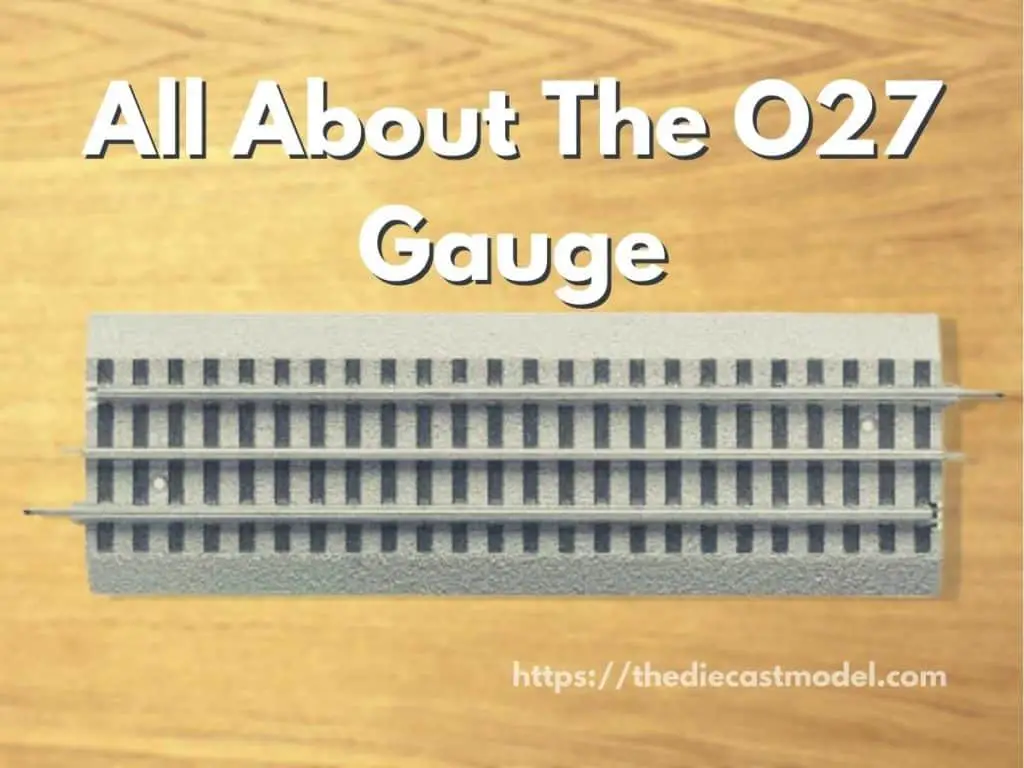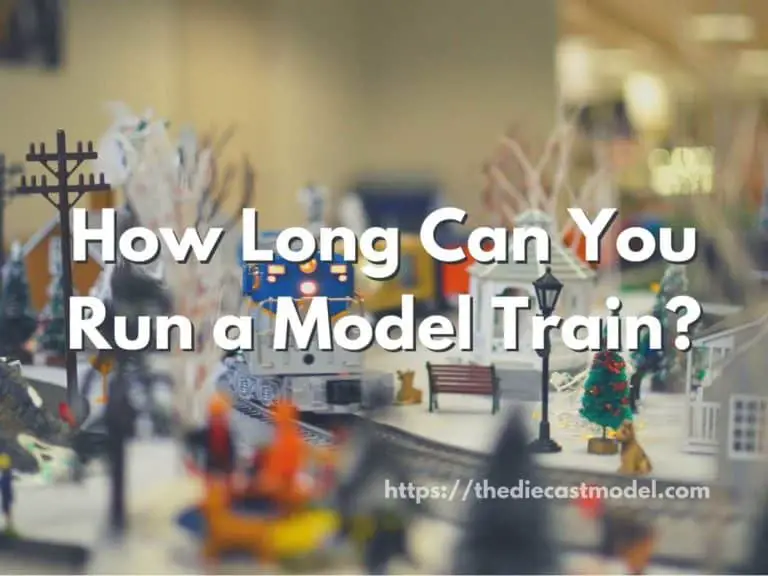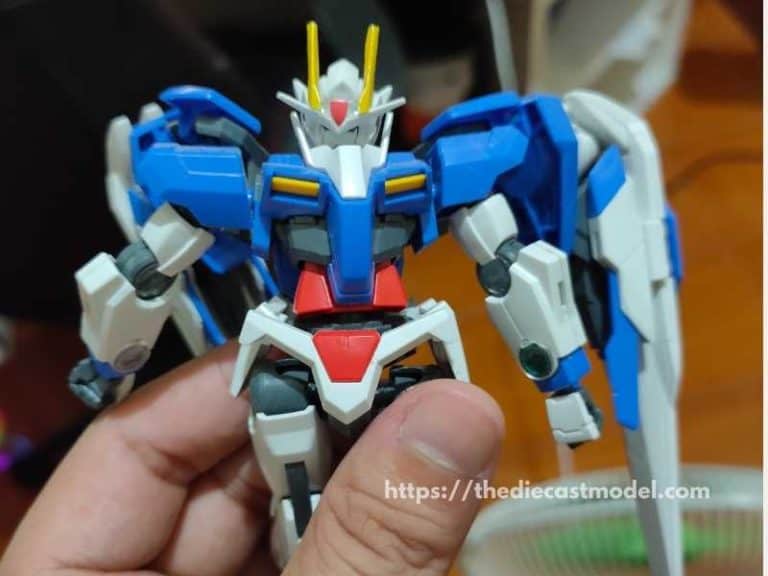What is the O27 gauge track? A Look into the O27 track, why it became popular, characteristics, and history
One of the most popular variants of the O gauge track is the O27. The O27 is a gauge track produced by the model train manufacturers to attract more people into model railroading. The efforts became successful that the O27 is still used in some O scale tracks today. But what is the history of the O27? What are their differences from the standard O gauge? What scales does it use, and how wide are its tracks? We will answer all of those in this post.
The O27 track is a variant of the O gauge track with sharper turns, shorter rails, and cars. Because of its larger turns, the O27 tracks only require 27″ of space to make a complete circle. This significant reduction of space requirements allowed more people to get into model railroading.
This post will give you a complete understanding of what the O27 track is. We will first talk about its history and why it became one of the most popular variants of the O scale. After that, we will discuss its characteristics and how it differs from the standard O gauge.

What is O27 track?
The O27 track is a type of O gauge track that is the product of the model train manufacturers’ effort to get more people into model railroading. These tracks have shorter tracks, larger turns, and are generally cheaper than the standard O gauge tracks.
The O scale is one of the most popular scales in the old days. Thus, many companies are competing on the scale, which produces some variants to the scale.
The O27 is one of the products of those variants.
But first, why did it become one of the most popular O gauge variants?
Earlier, I explained that the O scale was one of the most popular scales. However, it came with a huge problem which is space.
The O scale is equivalent to the 1:48 scale. This means the actual models are 48 times larger than the model.
The 1:48 scale has a huge problem. Even if it is a popular scale, it requires a lot of space.
If we convert real train tracks to the O scale, we need at least 6 square feet of space to make a circle layout.
However, this massive space requirement is not viable since there are only a few people who would give that much space for model trains. That’s when manufacturers started sacrificing realism for model railroading to be viable.
That’s why the modern standard O gauge required only at least 31″ of space to make a circle track.
While that is good enough, 31″ is still big and has become a roadblock for many people to try model railroading.
To get more people into model railroading, manufacturers thought of a way to make the hobby space-efficient and cheaper.
That’s why Ives Manufacturing Company and American Flyer started producing a variant of the O scale that only requires at least 27″ of space to make a circle which eventually became the O27 track.
The O27 track featured sharper turns, shorter tracks, and cars. This allowed their layouts to be more space-efficient than the standard O gauge.
Furthermore, the O27 gauge’s tracks used lower-quality and thinner materials, making it cheaper to start model railroading.
What’s more, is the trains are on the O scale, which makes them compatible with the standard O gauge tracks.
Because the O27 is cheaper and compatible with the popular O gauge track, it attracted a following, making it a popular variant of the O scale.
O27 also used fewer materials leading to shorter tracks and trains.
This popularity led to other manufacturers such as Lionel producing O27 gauge trains.
This table is a summary of the characteristics of the O27 gauge.
| O27 Scale Characteristics | |
| Track Gauge/Width | 1.25″ |
| Track Height | 0.437″ |
| Scale Used | 1/48, 1/64* |
| Track Circle Diameter | 27″ |
| Track Length (Curve) | 9.5″ |
| Track Length (Straight) | 8.75″ |
| Minimum Track for Circle Track | 8* |
| Average Length of Train Car | 7.5″ |
| Compatibility | O gauge |
Note: The minimum track for circle track is 8 but can go up to 12 depending on how sharp the curve is. For the 1/64 scale, I explained its history later in this post.
The following section will talk about what happened to the O27. After that, we will continue with its history and where it is today.
What scale is O27?
Generally speaking, the O27 uses the O scale, which is 1/48 the size of the actual model. Hence, they are called the O27. However, some older O27 models used the S scale, which is the 1/64 scale.
We are now going to continue with the story of the O27 gauge.
So, the O27 gauge became a popular variant of the O scale because it is cheaper and space-efficient than the O scale.
Furthermore, their trains are compatible with O gauge tracks which made entering the market easier.
This made the O27 a popular choice for beginners and people with less space for model railroading.
These models are in the O scale, which is 1/48 the size of the actual train.
However, the O27 has a problem.
The O27 has sharper curves. This means long locomotives or cars in the O scale will be stuck on the turns.
This is why all O27 models can run on O gauge tracks, but not all O scale trains can run on the O27 track.
That is why some manufacturers like Lionel started to think of ways to make models of long train cars. However, if they stick with the standard 1:48 scale, it would not work on an O27 track.
That’s where they experimented on other scales like the S scale, which are models in the 1:64 scale. These models are smaller than the O scale and compatible with the O27 gauge tracks.
However, it is worth noting that the modern S scale does not use the O27 tracks anymore. Why? Because the O27 gauge and the S gauge are now different.
The O27 track is 32mm or 1.25″ wide. This is also the gauge used by the standard O gauge.
However, the S gauge is now 0.883″ wide.
Thus, old S scale models can run on O27, but new versions of the S scale won’t.
But what I want you to understand is that the O27’s limitation made manufacturers try other scales. However, generally speaking, they use the 1:48 scale or the O scale.
As time went by, the O scale became less popular due to people living in smaller spaces. This made the rise of the HO scale, which is the most popular model train scale today.
This decrease in the O scale’s popularity made the O27 un-usable. The O27’s selling point is it is O gauge compatible that is smaller. With HO being smaller than the O27, it doesn’t fit the current market trend.
Here are some figures to explain what I mean.
Today’s most popular scale is the HO, and the OO scale accounts for 60 to 70% of the model trains. The second most popular is the N scale which accounts for 20%. Finally, the remaining are divided into other scales like the T scale, Z scale, O scale, and others.
Reminder: The O and the OO scale are different from each other, with the O scale larger than the OO. If you’re interested in knowing about the OO scale, please check this post: HO vs. OO scale.
With only a few people going for O scale trains, O27’s popularity went downhill, and its production has ceased.
Not only is HO smaller than O27, but it is also cheaper than the O scale. Thus, with no market, the O27 isn’t produced anymore.
However, there are still some collectors on the O27 gauge.
These are the things you need to know about the history and the characteristics of the O27 gauge. To understand its difference from the O scale, I recommend you to read the post I will link below.
What’s Next? I made a post differentiating the O and O27 gauge. If you’re interested, feel free to check this post: O vs. O27 gauge.







